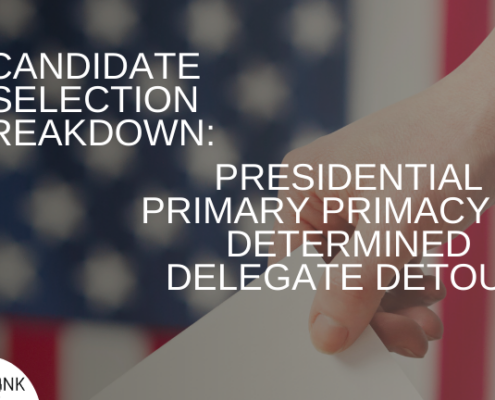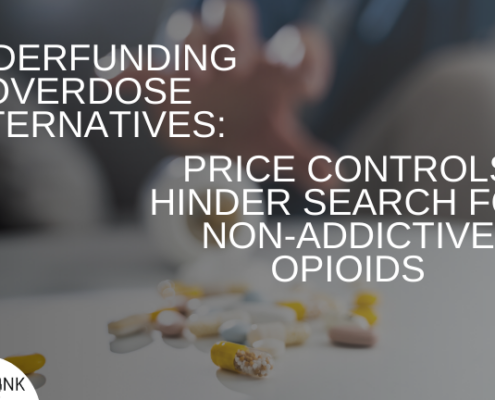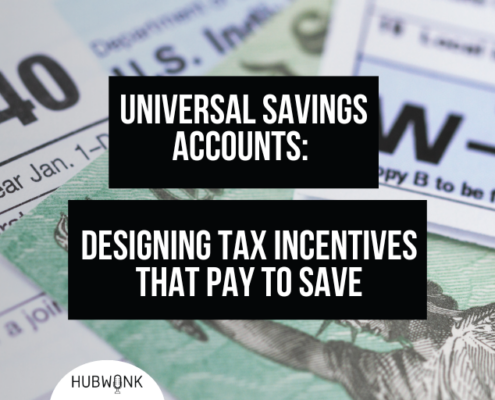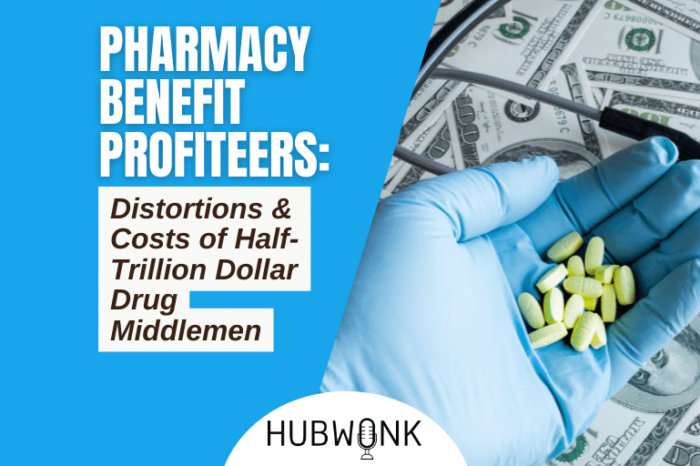Pharmacy Benefit Profiteers: Distortions and Costs of Half-Trillion Dollar Drug Middlemen
/in Featured, Healthcare, Podcast Hubwonk /by Editorial Staff
Hubwonk Host Joe Selvaggi talks with ALVA10 CEO Hannah Mamuszka and Chief Medical Officer Dr. Blake Long about the perverse incentives imposed by Pharmacy Benefit Managers adding nearly $500 billion to U.S. drug costs.
Guests:
 Hannah Mamuszka is Founder & CEO of ALVA10, a healthcare technology firm. Hannah has spent her 20+ year career in diagnostics – both in pharma and at diagnostics companies, in the lab and on the business side. She believes that the challenges of diagnostic technology fully impacting patient care are more commercial than technical, and conceived of ALVA10 to create a mechanism to pull technology into healthcare by aligning incentives through data. She regularly speaks on issues regarding advancement of technology in healthcare, is on the Board of Directors for two diagnostic companies and writes a column on the value of diagnostics for the Journal of Precision Medicine.
Hannah Mamuszka is Founder & CEO of ALVA10, a healthcare technology firm. Hannah has spent her 20+ year career in diagnostics – both in pharma and at diagnostics companies, in the lab and on the business side. She believes that the challenges of diagnostic technology fully impacting patient care are more commercial than technical, and conceived of ALVA10 to create a mechanism to pull technology into healthcare by aligning incentives through data. She regularly speaks on issues regarding advancement of technology in healthcare, is on the Board of Directors for two diagnostic companies and writes a column on the value of diagnostics for the Journal of Precision Medicine.

Blake Long MD.
Dr. Blake Long is the Chief Medical Officer of ALVA10. Blake was previously the Chief Medical Officer for Sapere Bio and for Echo Health Ventures, the venture investment group of BlueCross BlueShield of NC and Cambia Health Solutions. Prior to Echo, Blake served for 20 years as a practicing pediatric cardiologist at Savannah Children’s Heart Center and as a clinical professor at Mercer University School of Medicine. He earned his BA and MD from Duke University, and then completed his clinical training at Walter Reed Army Medical Center and Duke Medical Center. He received his MBA from Duke’s Fuqua School of Business in 2015, and now is an Adjunct Professor at Fuqua in the Health Sector Management Program.
WATCH:
Get new episodes of Hubwonk in your inbox!
Read a Transcript of This Episode
Please excuse typos.
Joe Selvaggi:
This is Hubwonk, I’m Joe Selvaggi.
Joe Selvaggi:
Welcome to Hubwonk, a podcast of Pioneer Institute, a think tank in Boston. The high cost of healthcare is often blamed on the high cost of drugs, but a careful look at our healthcare system reveals that costs charged by drug manufacturers are less than the cost of the intermediaries known as pharmacy benefit managers, which neither make drugs nor provided insurance, pharmacy benefit managers, or PBMs, as they’re known, were designed to negotiate drug discounts on behalf of health insurance providers, and then take their earnings from a portion of the negotiated discounts. Incredibly the PBM industry itself today owing to the complexity and opacity of the healthcare system. Now cost the us healthcare system more than either the cost of drugs or the cost of insurance with PBMs. Now enjoying more than 400 billion in revenue annually, where still the incentive structures within PBMs combine doctors to prescribe drugs, not based on optimal clinical benefit, but on the price structures of the PBMs.
Joe Selvaggi:
How have organizations built to reduce the cost of drugs become bigger than the drug companies or the insurance companies themselves, and what can regulators and consumers do to reform the system to better align incentives in a way that encourages lower costs and greater freedoms for doctors to care for their patients. My guest today, our Alva 10 CEO Hannah Mamuszka and her firm’s chief medical officer, Dr. Blake Long as advocates for the use of testing to determine proper medical therapies known as precision medicine. Hannah and Blake have studied the costs of the distortions created by PBMs incentive structures. They will share with us how pharmacy benefit managers work, why they have grown to nearly half a trillion dollar industry and what consumers and policy makers can do to encourage reform. They can lower costs while encouraging more effective drugs and therapies for how healthcare consumers, when I return, I’ll be joined by Alva 10 Hannah Mamuszka and Dr. Blake Long. Okay. We’re back. This is Hubwonk I’m Joe Selvaggi, and I’m pleased to now be joined by Alva 10’s chief executive officer Hannah Mamuszka and Alva 10’s chief medical officer, Dr. Blake Long. Welcome back to Hubwonk, Hannah, and welcome to Hubwonk, Blake.
Dr. Blake Long:
Thank you so much, Joe. Yeah. Thank you, Joe. Pleasure to be here.
Joe Selvaggi:
Okay. We’re gonna be talking about pharmacy benefit managers or PBMs as they’re known and their effect on the cost of drugs and the availability of particular drugs in our healthcare system. Our listeners, remember you Hannah, I’m sure as an expert in precision medicine an advocate for precision medicine. So I’d like to have Blake introduce himself and share some about, of his background and how he came to precision medicine and alpha 10 and where he comes at this issue of PBMs.
Dr. Blake Long:
Oh, well thank you, Joe. So my background, I initially studied health economics and then completed medical training and practice as a pediatric cardiologist for about 20 years. And over that time, I became increasingly frustrated with the complexity of the healthcare system and its effect on patients and physicians. And so decided to make a career pivot and work on healthcare system change through innovation and investing. And I joined the alpha 10 team and Hannah they’ve been working on that about two and a half years ago.
Joe Selvaggi:
So your voice is coming from someone from the inside who sees that you have patients who need care. You have doctors who want to help them, but a system that somehow interferes with that, with that process.
Dr. Blake Long:
Indeed I did. I experienced it on a regular basis. There are a lot of distortions particularly with choices for therapies or diagnostics, whether it be testing or imaging. A lot of times those things were dictated to me and not in the best interest of patient care or as I saw fit.
Joe Selvaggi:
Okay. So now Hannah, I wanna dig into our topic of pharmacy benefit managers by first defining what they do. I mean, who, who created these things and, and what were they supposed to do, or what are they supposed to do for our healthcare system?
Hannah Mamuszka:
So PBMs have been around for a while. They’ve actually been around since the 1960s. They started to kind of creep into healthcare system in the, and nineties when the first ones were, were actually spun out of payers. The idea is that there needs to be some kind of an intermediary that works between the insurance company and the pharmaceutical company, the drug manufacturer who’s manufacturing the drug. So even though the name pharmacy benefit manager makes you think of pharmaceutical a and benefit manager is much more closely related to the insurance company than it is to the pharmaceutical company. The idea with the PBMs pharmacy benefit managers is for them to negotiate best drug prices and then pass that along to payers in theory, enabling a better competition in the market, better pricing and theoretically better value.
Joe Selvaggi:
So Blake and you study this, you have the background in the economics, how do PBMs make their money in the system?
Dr. Blake Long:
They’re, it’s, they’re in the middle of a multi-sided market. And so they have essentially four different ways they make money. The first is fees that they receive for, from predominantly from the health plan for managing transaction costs and medication management for patients. The second is what’s called spread pricing where they collect a, a price from the payer and then actually charge a different price to the pharmacy and keep the difference. The third is what’s called call callbacks, and these are contractual relationships with the pharmacists that if they need certain metrics, don’t meet certain metrics, they can reclaim some fees. And the lab last one is sort of the big one, which is rebates in that. The pharmaceutical company gives a discount to the PBM for guaranteed volume. And so they set a high price. And if that volume is met, they’ll give a discount. What’s key is that all these things are done after the point of sale. So those are the four real avenues of PBMs making money.
Joe Selvaggi:
So in theory they’re paid out of the discounts. They fight for on behalf of insurance companies, which ultimately where the consumers who pay those insurance rates, clawbacks, how do these work do consumers when they, when we get these dis presumably we get cheaper drugs do these clawbacks ultimately are down to the benefit of, of someone out there buying a drug.
Dr. Blake Long:
The clawbacks have less effect on sort of the consumer point of sale. They’re really affecting the margins of the pharmacist. And that is gonna be a less of a C the more important one is the, is the rebate issue. And that’s the big one. And just some general sense about the scale of this the contracts between the PBM and the pharmaceutical manufacturers, which is where the rebate is. The effect is very, but some published studies have shown how significant they are. For example, in 2016, 13 major pharmaceutical companies had gross revenues of approximately 300 billion and they paid 100 billion in rebates back to the system for a net revenue of 200 billion. So in other words, the pharmaceutical manufacturers paid 30% of their gross revenues back to the system in rebates or about 50% of their net revenue. In other words, the money they keep. And that’s been increasing sign over the last several years.
Joe Selvaggi:
That that seems like a lot of money. We’re talking about big bucks even in, in relation to the size of our healthcare system, how large is the PBM industry itself, meaning not the drug companies money to them though I’m doing the math. If they’re paying a hundred billion, we’re saying a hundred billion goes to the PBM or that that money goes some to the PBM and some to the back to the insurance company.
Dr. Blake Long:
The an yes, some goes to the PBM and some goes back to the insurance company. So just to, you know, a couple of other things on that issue the top five PBMs in 2021, their gross revenues were 422 billion, which is 9% higher than in 2020. So there’s been growth and it’s 56% higher than in 2015. So that, that revenue growth for PBMs has been dramatic. They have profit margins about four to 5%. So that’s a lot of profit it’s, it goes into the PBMs. And just to compare the top five pharmaceutical companies had gross revenues in 2019 of half of that, or 240 billion. And the top five insurers had 72 billion in gross revenue. So just to give you a sense of, of relation and scale.
Joe Selvaggi:
So if I get those numbers, right, the, the quote, unquote middleman, if I’m entitled to call PBMs, middleman are much larger, then the people that are standing in the middle, which are the drug companies and the insurance companies, they’re, they’re relative giant compared to the people that they’re theoretically intermediaries for
Dr. Blake Long:
That’s that’s correct. Yes.
Joe Selvaggi:
What, what percentage of, of drugs pass through these PBMs? And frankly with that much money I believe in markets, I hope we all believe in markets and the power of markets, shouldn’t that amount of money encourage competition. And we all know of basic economics in the long run profits go to zero, what’s going on here. You know, is do they compete with each other?
Dr. Blake Long:
There are three large PBMs and they own 90% of the market share. So they’re competing against each other, but they have, you know, quite a bit of market. That’s a significant concentration. And they, we know them as, you know, CVS care marks, Cigna express scripts, and United health group OptumRx of note, a lot of those are recent horizontal consolidation or with insurers. And then finally there are roughly about 70 PBMs, including those top three, and there’s been several, a few recent entrants. So there’s a lot of smaller ones that are competing against each other and against those big three.
Joe Selvaggi:
So presumably this is a, a industry that’s perhaps ripe for disruption. We will talk a little bit later in our conversation, whether any of that’s actually happening and how that would happen. But so far, I mean, at a high level, despite the fact that they seem to be collecting new nearly half a trillion dollars in revenue they do seem to be somewhat useful. They advocate for cheaper drugs and, and in theory, more competition, if a drug is too expensive, presumably they’ll choose a, a less expensive drug, but let’s, let’s talk about how a, a PBMs, how they were originally designed to negotiate on our behalf. And I presume encouraged competition of cheaper drugs where have distortions begin to where have they started to appear. Let me just throw out an idea here.
Joe Selvaggi:
I mean, you’ve, you sort of implied that if PBMs are driven by their own profits, 422 billion, a lot of profit, and those gen the profits you said are generated primarily by the discounts. They negotiate on our behalf with the drug companies and the more expensive a drug is the bigger, the potential for a discount. There seems to be clear initiative to or an incentive to include more expensive drugs on a formula instead of cheaper generic drugs, right? If a, if a drug costs almost nothing, the discount is almost nothing. So to me, you know, as, as a layman, this seems like an incentive for really expensive drugs.
Hannah Mamuszka:
Yeah. And that’s exactly how we’ve ended up with the hell healthcare system that we have. You know, if you look at what happens to new entrants, to drugs that get approved in indications where there are already drugs in other markets, you would expect a new entran to come in at a low price, right? To try to induce customers, to try a new drug to try and do physicians try to induce the PBMs and the payers, it’s actually the opposite in our system. Now if a new drug comes into the market and isn’t priced high enough to confer those discounts, that drug won’t be placed on the, on the formulary, the only way that you can get access to formulary tiering. And, and just to clarify, you wanna be as high on the formulary as possible because that’s the order in which physicians are allowed to order and, and try drugs on their patients. You wanna be as high up on that formulary, tearing as possible. It’s actually pricing your drug higher. That gets you there. It’s not pricing your drug lower that gets you there because that’s exactly what you said, Joe. That’s how you get that discount and that how that’s, how they make their money.
Joe Selvaggi:
So, so this would seem to be exactly counter to the notion of markets that, you know, a high price would invite lower cost competitors to enter the market. So the PBM looks at this lower cost alternative. I got drug a that’s expensive in drug B that’s cheaper. My mandate is to find cheaper drugs. And yet I may overlook the cheaper drug because there’s less discount for me to negotiate Argo. I choose the more expensive drug,
Dr. Blake Long:
Right? Yeah. That’s that, that that’s referred to as the rebate trap or the rebate wall. And so again, that established expensive incumbent, you know, gives a big discount. And so the new entrant w even might be a better drug for a patient or less expensive, but the savings that the health plan would realize from using that less expensive drug gets overwhelmed by the loss of the rebate for the more expensive one. So even though they may want to do that, they would lose money in the, in the aggregate because they would lose this massive rebate on the more expensive one.
Joe Selvaggi:
Yes. I can imagine all the drugs, some in the future go to generic, they’re all, you know, a dollar, I don’t know how one would earn 422 billion with a formulary full of very inexpensive generics. So we can see a problem right there as something working against, against the consumer. So I wanna Dr map our, our conversation directly onto your work with alpha 10 advocating for precision medicine for our listeners who haven’t heard our earlier episodes together, precision medicine, if you’ll, let me sort of generalize is, is the idea that different drugs and therapies work differently for different people and with better testing, we could bring to bear more effective drugs right away. We don’t have to give everybody drug one what works and then give those who didn’t, it didn’t work for drug two on and on, on, we test everybody and give everybody the right drug the first time. Again, I’m, I’m generalizing, but that’s how I see precision medicine. How, how might the dynamics of PBMs ate against the idea of precision medicine? How, how would it work against what you’re trying to do?
Hannah Mamuszka:
Yeah. You know, in some ways I think that the concept of having a PBM to help a physician figure out which drug to choose, you know, predated this concept to precision medicine, because when you had multiple drugs and there was no biologic way to tell which patient was gonna respond to which drug, it made sense to make that decision from an economic perspective, since you couldn’t make it from a clinical perspective. Now we know that we have the tools to figure out which patients are gonna respond to which drugs. So you could ask why we would want to use the economics instead of the clinical. So, you know, if you take, if you take an example like rheumatoid arthritis, rheumatoid arthritis is an autoimmune disease where you have multiple classes of drugs that work through different mechanisms of action. And then with E within each class of drugs, you have multiple drugs.
Hannah Mamuszka:
So you have, if you’re a, if you’re a rheumatologist treating patients with rheumatoid arthritis, you have a whole variety of drugs to choose from. And right now, most of that choice is dictated based on the formulary tiering of your pharmacy benefit manager. However, now there are diagnostic tools on the market that would allow you to figure out if your patients should go on a, say, a TNF inhibitor, which is the predominant class of drugs that’s used in rheumatoid arthritis, which works in about 30% of patients who are prescribed to them, or if your patient should go on a Jack inhibitor or an interleukin drug. But the problem is, is that the rebates for the TNF inhibitors in rheumatoid arthritis are so substantial that when payers take a look at what it would take to implement using a diagnostic in rheumatoid arthritis and shifting some of those patients from TNF inhibitors to Jack inhibitors, or to other classes of drugs, from an economic perspective, they realize they’re gonna lose their rebates because they are going to dip down below the threshold of volume under which they get those rebates and the drug is gonna become much more expensive.
Hannah Mamuszka:
And so, even though they now know that they have a tool where they could place patients on a drug, that was, they were most likely to respond to where they, their symptoms would decrease, where they’d be less likely to be in the hospital where they’d be more likely to be functional and feel better and be productive at work from an economic perspective, they can’t make it work. And we’ve talked to PBMs about this. We’ve actually also talked to some employers about it, and some of the employers have essentially admitted that their economic structure of their health plan is so dependent on the rebates that they can’t make the decision to add in a diagnostic, knowing that it would, would improve the outcomes for their employees, because the rebates are so substantial from the PBMs. And that’s a problem because in, in 2022, we have the technical capability to do this, but now we’ve created this economic problem. So we’re putting the economics ahead of the clinical improvements for patients.
Joe Selvaggi:
So I, I find this hard to believe I’m gonna kick it back to Blake, cuz he’s the doctor in the room. And I’m gonna say in this model, if I’ve got it straight from what Hannah’s just told us, we could offer a patient, a diagnostic test that would tell them, which is the right drug to take first. And by so doing, we may actually discover that it’s a lower price drug or a drug that offers a lower rebate Argo. I’m not gonna do the test and I’m going to give the maximum rebate drug to all my patients, knowing that I could avoid the time and the, you know, I’ll call it suffering that giving the sort of ineffective drug first will, will incur on my patients. How, how does that ring in a doctor’s ear?
Dr. Blake Long:
Back to my intro, not well <laugh> exactly. It’s so again, it’s, if you sort of think about it, I’ll answer it sort of academically and then sort of a little bit more to the patient level. As Hannah described, we have this decision making based on the economics for what is chosen and that is decided by a volume thing in retrospect. And so the ideas that you look back and say, this is how much drug I need to, we need to use the volume. And then I use all, all those tools of tearing step therapy, which is really hard for patients. I have to try a drug, make it fail before I go to the next one, very difficult for patients. In prior authorization, you can’t get the drug approved with, until you do all these steps, they use all these tools to make sure they hit those volume targets.
Dr. Blake Long:
Whereas we are thinking about using a diagnostic tool and if you look at it from the PBM perspective as a potential advantage, you could say, I have certain number of patients and I know who is gonna be on the drug and who will respond and I can guarantee the volume prospectively. And then you negotiate a rebate on that rather than in retrospect, as which is how it’s doing, what that’s doing for con consumers or patients is most patients now in the marketplace are on high deductible health plans. So they are exposed to a large co-insurance. So the higher, the price of the service or drug, the more they have to pay and in the specialty pharmacy area and in Medicare part D for example, in cancer average copays now, or 12 month prescription or 10 to $15,000, and that results in a non initiation rate of 30%. So it, it has a significant out of pocket cost to the consumer getting exposed to these rebate driven co-insurance problems and lack of utilization. So I can’t pick the right, the patient doesn’t has to go through drugs that don’t work to get there. And then they’re exposed to the significant cost. It’s a real problem in the clinic.
Joe Selvaggi:
So the PBM is both making that drug, that they need more expensive. It’s making it less likely they’ll be prescribed the better drug regardless of cost, because it’s lower on the formulary. And when they ultimately do have to pay they do, I have it right. They don’t enjoy the, the discount or the rebate. They, they have to pay retail flush that out for our listeners a little more. Again does do I, the cancer patient, you, there’s a remarkable 10, 15,000 cost per year. Of course, as you mentioned, that means they’re percent of people with cancer don’t take their drugs. How, how does that work? How does it how am I not benefited by the, the discount that the PBM negotiated on my behalf?
Dr. Blake Long:
Yeah, that’s a, that’s a great question. And that’s really, the complexities is the, the co-insurance is at the price at the point of sale. So you get exposed to the full price and then the discount happens after the sale. So all that money gets flowing around after I’ve already paid the price at the counter, so to speak or the point of sale. And so that rebate then goes back into the PBM and doesn’t necessarily come back to me. I don’t see that discount at the point of sale. So the co-insurance gets exposed to the higher price. That’s why it’s so problematic for the patient.
Joe Selvaggi:
You know one of the reasons we’re addressing this question now, as you say, the PBMs been around for a while and they’ve been getting worse, but it’s, it’s a, seems like a, a, a substantial problem. I I’ve read that. There’s some attention of on this issue, PBMs by the federal trade commission, these are the people who are supposed to protect us from unfair trade practices, such is monopolistic behaviors, I guess this would be called monos. We’ve got a few buyers of, of, of big buyers of, of drugs. Is anything being discussed at the high level? You guys I’m sure are up on this, what’s going on with the federal trade commission, are they looking at this and do they see it as the problem that, that we do?
Dr. Blake Long:
So yes, the federal trade commission just recently dealt with this issue and the focus primarily was on the pharmacy clawback issue as being Andy. But they voted in a two to two to not actually have the FTC TC explore that issue. But the, the study that was planned was more encompassing to look at the rebate side of the market, which is between the PVM and the pharmaceutical and other anti-competitive practices, including spread pricing and some of the other things and the thought was, is that is not the objection to pursuing the study were that it was not clear how it was going to affect consumer welfare, which is a, a little bit interesting given the discussion we’ve had just previously.
Joe Selvaggi:
Yeah, I, I did read something about the head of the FTC a woman named Lena Conn recently appointed by the Biden administration. She sees pretty tough on anything that looks like monopoly, but here, I think they’ve sort of lost the, the, the main point of our conversation. I think they, as you say, we’re more concerned about what PBMs do to little pharmacies in, in, in prefer or privileging the CVSs of the world in at the expense of the mall. Pharmacists. I think the bigger question as you point out, it seems like they overlooked the huge distortionary effects as in a half a trillion dollars siphon off the system that interfere both with the price of drugs, the availability of proper drugs, the prevalence of tests all the distortions. Why do you think they’ve overlooked this half a trillion dollar elephant in the room, Hannah,
Dr. Blake Long:
And you wanna tackle that one? <Laugh>,
Hannah Mamuszka:
You know, I, I find it fascinating because there’s so much of a discussion right now as there is this time, every election cycle around drug pricing and on Medicare’s ability to influence drug pricing about the government’s ability to influence drug pricing and about, you know, should we be importing drugs from other countries and how do we not stifle innovation? And that’s, that’s all fun. And that’s an interesting conversation to have every two years, but it, it stymies me. And I don’t know if it’s because the industry is so opaque, it’s so difficult to figure out a lot of these contracts are secret. A, you know, if you talk to payer, a lot of them don’t even know what are in at, at very senior levels. They’ll describe that these contracts are so secret that they haven’t seen them. They’re not allowed to discuss the rebates. They’re not allowed to share them. None of this is publicly available. It’s, it’s essentially impossible to figure out how valuable they actually are other than the fact that, you know, these are publicly traded companies and, and you figure out at the end of the year, what they’ve been up to. But it’s, it’s a real question as to why there’s so much focus on the pharma industry who is doing research and actually developing drugs, but makes less profit off of them than the PBMs do.
Joe Selvaggi:
Yes, indeed. We’ve had shows on Hubwonk, talking about the fact that drug prices though, the, the popular narrative is that they’re going up, they’ve seem to have stayed with inflation or, or, or not kept up with inflation. So the booking man on the political level is definitely the drug companies, but PBM seem to miss any kind of scrutiny, even though, as you say, they’re not even making the drugs, they’re not, they’re not healing us. They’re doing essentially nothing but acting as intermediaries. All right. So the FTC, so took a pass on this. I, I, I do though think that I I’ve read somewhat on this, that senators from both sides of the aisle Republicans and Democrats have both said, look, let’s, let’s, let’s keep this on the, on the front burner. Let’s, let’s take another look at this. I think there’s more to the eye more to the issue than the I can see right now. So let’s hope that this remains top of mind, but if the federal government can’t be relied upon to, in a sense, go out there and figure out what’s going on with this system, what what can consumers our listeners, business owners interested policy makers, what can those people who really want to tackle this issue? What can they do?
Hannah Mamuszka:
You know, I think, I think we’ve seen changes in terms of employers starting to realize, especially smaller employers and employers that self-insure starting to think about out the consequences of PBMs and of the rebates of PBMs and how that impacts both their healthcare costs, their employees’ ability to work. We’re seeing more and more market entrance of smaller, more innovative PBMs that have a different business model, where their business model is, you know, they contract with your employer on a, you know, a per employee or a per member basis. So they are not incentivized by the rebates they’re incentivized to grow their business. Some of them have other more interesting value based arrangements around performance in terms of how your employees, your patients are doing. So I think that there is a, a starting to be some market pushback, but as Blake said, you know, the dominant mechanism for PBM business relationships right now is the rebates. And most companies, most employers are using a PBM that is using the rebates as an incentive to drive business. And it, it, it greatly affects how employers make decisions about their employees healthcare. And I think it’s really important for employees to start to think about that and to start asking questions, particularly, you know, as benefit selection, season rolls around, you know, think about what that means for your benefits program, for what your employer is offering you, because, you know, it might have some consequences that maybe unintended.
Joe Selvaggi:
So there are PBMs. We don’t wanna paint everybody with the same brush. There are PBMs who do have incentive structures aligned with the benefits of consumers and, and businesses. We just gotta go out there and find them is it the case that I do, we’re, we’re blaming these kickbacks, if you will. These discounts that are negotiated as sort of the the, the mechanism by which PBMs, I think exploit the system or distort the system, is, are there PBMs that have no do not use that at all? How do they, in a sense negotiate for better prices and what metric do they use instead?
Hannah Mamuszka:
Yeah, I mean, there are ones like Costco health, like empire RX health RX sense, well done, just to name a few that are on, on some sort of a fee based model where, you know, they’re really trying to grow their business, their own business based on aggregated volume and not participate in the, in the rebates, because I think that there there’s a growing trend in that direction of understanding that at some point we’ll have to change how we pay for drugs.
Joe Selvaggi:
So, Blake I’ll, I’ll say to you, again, with the economics background as companies, insurance firms, you know, say way and slowly start to shift toward this newer model, this fixed fee or fee for per unit or something like that. This must then if we take some of these half a trillion dollars of intermediary fees out that should reduce premiums and save consumers money in the long run, shouldn’t it?
Dr. Blake Long:
It should, it should because that’s money that really in sort of in the middle and it’s not actually moving back to creating value. And I, I think one of the key things that Hannah said for this precision medicine is we can move to more fee based, but also as the pharmacy benefit with, which has historically been markedly separated from the medical benefit is those things start to blend together and the pharmacy actually affects your ethical outcomes and your costs, and therefore your premiums, as well as the point of sale costs that we talked about for paying for the drug that as you start blending those together, you, and then we move to value based care, moving to risk based contracts would be another interesting way to say a, how you manage your pharmacy benefits. So there are a lot of ways to use more clinical tools and to use more risk based contracting and move away from the rebate model and just a, a fee on a transaction in looking more for outcomes. I, I think there’s a lot opportunity to move in directions that can be really beneficial for patients and actually reduce total cost of care on top of reducing specialty pharmacy care.
Joe Selvaggi:
Yes, this seems like it’s a potential for win, win, win. As you say, you never wanna be making decisions with people’s health based, purely on economic reasons. You wanna use clinical reason. You want people to get better. And this seems to be just gratuitously distortionary and one hopes fixable without causing harm to anyone. Well, this is a very complex issue. I, I hope I’m gonna say let’s watch this space because I think this should come up and I’ll have our I’ll invite our listeners to call their Congressman or Senator and say, you know, what, what are you doing about this? And let’s see if this can’t come back into the forefront of of our attention. So thank you very much. Both of you for joining me on hub won. I hope if it does come back onto the public’s eye, you will come back and join me and explain what’s going on. And if we’re moving forward in the right direction, for sure
Dr. Blake Long:
Will do.
Joe Selvaggi:
Thank you. Thank you both.
Dr. Blake Long:
Thank you. Thank you, Joe.
Joe Selvaggi:
This has been another episode of Hubwonk, a podcast of Pioneer Institute. If you enjoy today’s episode, there are several ways is to support the show. It would be easier for you and better for us. If you subscribe to hub wonk on your iTunes podcast, catcher, if you wanna make it easier for others to find Hubwonk, it would be great. If you offer a five star rating or a favorable review, we’re always grateful. If you want to share Hubwonk with friends, if you have ideas or comments or suggestions for me about future episode topics, you’re welcome to reach out to me hubwonk@pioneerinstitute.org. Please join me next week for a new episode of Hubwonk.
Recent Episodes

Registering Republican Realignment: GOP Convention Showcases Conservatism’s New Direction

Candidate Selection Breakdown: Presidential Primary Primacy or Determined Delegate Detour

Breaking Down Encampments: Court Finds no Right to Sleep Outdoors

Underfunding Overdose Alternatives: Price Controls Hinder Search for Non-Addictive Opioids

Unlocking Affordable Housing: Sources and Solutions for Cost Crisis

Jawboning Free Speech: State Coercion Finds Limits at Supreme Court

Protectionism’s Bipartisan Embrace: Who Pays When Imports Cost More




